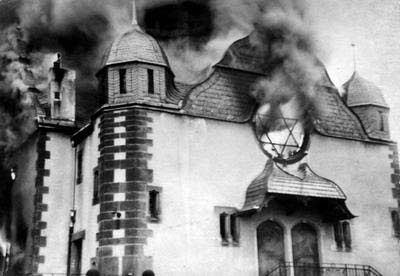The German town of Görlitz is refusing to allow its Jewish community to hold its own ceremony marking Kristallnacht.
 After Kristallnacht. Instead, the only ceremony marking the 70th anniversary of the Kristallnacht pogrom will be held by the local Protestant church, which has traditionally focused on all victims of the Third Reich.
After Kristallnacht. Instead, the only ceremony marking the 70th anniversary of the Kristallnacht pogrom will be held by the local Protestant church, which has traditionally focused on all victims of the Third Reich.
The small Jewish community had planned to bring a Torah scroll from Dresden into a newly renovated synagogue, which dates from 1909. It is the only synagogue to have survived Kristallnacht in the state of Saxony.
But the city insists that ceremonies must be secular and inclusive. The former synagogue was deconsecrated after the 1938 pogrom. Following its six-year renovation, the structure now has room for 230 guests.
"The city has canceled the entire event planned by the Jewish community and the Society for the Promotion of the Synagogue," which was to include several performances and speeches, Alex Jacobowitz, cantor and chairman of the town's tiny Jewish community, told JTA.
He insisted that the Jewish community's program would be inclusive.
The Society for the Promotion of the Synagogue is a secular group authorized to hold ecumenical events in the building. It cooperates with the Jewish community. Now, only the ceremony run by the local Protestant church is still scheduled to take place in the building.
The city bought the synagogue from the remnant Dresden Jewish community in 1963, and then formally purchased it again from the Claims Conference after German unification, according to Jacobowitz, a musician who came from New York to Germany in 1991.
The approximately 30-member Jewish community has held services in a small sanctuary within the building for about a year, Jacobowitz said.
Story from JTA - http://www.jta.org/cgi-bin/iowa/breaking/110844.html















